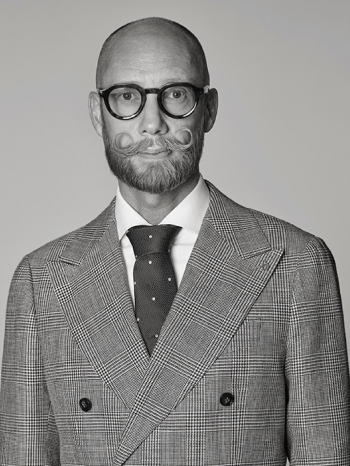A famille rose carp tureen, Qing dynasty, Qianlong (1736-95).
Finely modeled lying on the side with head and tail curled upwards, enamelled primarily in iron-red and gilt on the body, the body lightly moulded with scales decorated in iron-red embellished with gilt detailing to those on the upper side. With a monogram. Length 46 cm.
Wooden cover.
Kirjallisuus
Compare the Chinese small carp tureen (21.6 cm. long) decorated in iron-red and gilt from the Mottahedeh collection, Howard and Ayers, China for the West, London and New York, 1 97 8, vol. II, no. 61 2, p. 588, which is similarly modeled to the Chelsea examples but is depicted with raised head and tail.
It is interesting to note that all recorded examples of Chinese export carp tureens, both armorial and non-armorial, appear to be modeled facing the same way as in the present lot.
Other armorial carp of this size, have been published. Bearing the arms of Gálvez, Illustrated by Jean McClure Mudge, Chinese Export Porcelain in North America, New York, 1 986, p. 55, fig. 65 where the arms are wrongly attributed to Don Matias de Gálvez y Gallardo.
A pair of smaller armorial carp tureens (about 26 cm long), complete with matching stands, were bought several years ago from the London dealers Cohen & Cohen by an American private collector. The arms on these, erroneously thought originally to be those of the Barutell family, have not yet been identified.
Non-armorial carp tureens of this size are also rare. Two decorated in most unusual palettes were sold at Christies New York Rooms, 26 January 2006: one, lot 38, was decorated in iron-red and pale gray, with later metal cover.
Also compare one at Sotheby's Monaco, 29 February 1992, lot 536.
One, also with sepia tones, is in the East India Museum (Stadsmuseum), Gothenburg, and was bought for Niklas Sahlgren (1701 - 1776), a director of the Swedish East India Company. It is illustrated by J. A. Lloyd Hyde, Oriental Lowestoft, Newport, 1 964, plate XII, fig. 32, and by Stig Roth, Chinese Porcelain, imported by The Swedish East India Company, Gothenburg, 1965, front cover and fig.36, p. 27. Another, decorated in iron-red and gilt, was included in The Chinese Porcelain Company, A Dealer's Record.
A large carp tureen and cover, which is interesting from a historical point of view, is the undecorated example in the Copeland Collection at the Peabody Essex Museum, Salem, illustrated by W. Sargent, The Copeland Collection, Salem.
Muut tiedot
Fish appeared as decoration on Chinese ceramics as early as the Neolithic period, and have remained a popular theme in Chinese art, especially ceramics and paintings, ever since. Vessels made in the form of fish, were popular during the Tang dynasty (AD 61 8-907) and again in the 18th century. Much of the popularity of fish as a decorative theme, especially in later dynasties, hinges on the fact that the word for fish (yu) is a homophone for the word for abundance, and the word for carp (li) a homophone for the word for profit.
The most closely related European fish tureens, which may have been a source of inspiration for this model, are those made at Chelsea, circa 1755, albeit in very small quantities. The Chelsea tureens are somewhat smaller (approximately 40 cm long), are similarly modeled, but are depicted without the opening at the mouth, and without the head and tail curling upwards; the cover is formed as the upper half of the entire fish.

























































